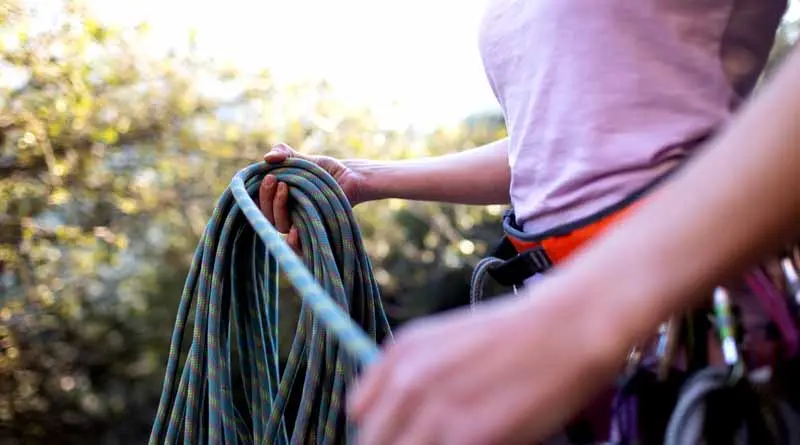
How to Maintain Your Hiking Gear
As the sun dips below the craggy peaks, casting long shadows over the trail, a seasoned hiker like myself begins to ponder not just the day’s journey but the longevity of the gear that made it possible. How do I maintain my hiking gear?
This question, fundamental yet often overlooked, is crucial for anyone who treats hiking not as a mere pastime but as a way of life. The durability of your equipment hinges on your dedication to its care.
The Art of Maintaining Hiking Gear: Ensuring Longevity and Performance
In the realm of hiking, your gear is not just equipment—it’s your partner in adventure. Just as you wouldn’t neglect a hiking companion, you shouldn’t neglect the care of your gear. Proper maintenance not only extends the life of your equipment but also ensures your safety on the trails and protects your investment from premature wear and tear.
The Crucial Role of Gear Maintenance
Maintaining hiking gear is pivotal for several reasons:
- Longevity: Regular care helps preserve the functionality and appearance of your gear, extending its usable life and performance.
- Safety: Well-maintained gear is reliable gear. When facing the unpredictable elements of the outdoors, the last thing you want is equipment failure.
- Cost-effectiveness: Investing time in maintenance saves money in the long run by delaying the need for costly replacements.
Overcoming Challenges in Gear Maintenance
Effective gear maintenance addresses several challenges:
- Dirt and Residue: Trails expose gear to a variety of contaminants. Dirt, mud, and dust can infiltrate fibers and mechanical parts, causing materials to degrade and mechanisms to malfunction. For instance, muddy boots may lose traction, and dirty zippers on tents and backpacks can become stuck, rendering them difficult to use or completely inoperative.
- Moisture Damage: Damp environments or storing gear while it’s still wet can lead to the growth of mold and mildew, not only compromising the material’s integrity but also creating health hazards.
- Wear and Tear: Regular use naturally results in wear. However, neglect can accelerate this process, leading to significant damage and potential failure when you least expect it.
Implementing a Robust Maintenance Routine
Here’s how to keep your hiking gear in top condition:
Step 1: Clean Your Gear After Each Use
- Boots: Knock off mud and debris. Wash with a gentle brush and specialized cleaner if heavily soiled. Dry away from direct heat to prevent cracking.
- Backpacks and Tents: Shake out loose dirt. Spot clean stains and wash gently with mild soap. Dry thoroughly before storing to prevent mildew.
- Clothing: Follow care labels. Wash dirty or sweaty clothes to remove salts and oils that can degrade fabric fibers.
Step 2: Inspect Regularly
- Examine all gear for signs of wear, such as frayed straps, torn fabric, or loose seams. Pay special attention to load-bearing areas and closure mechanisms like buckles and zippers.
Step 3: Repair Promptly
- Address minor repairs before they become major issues. Use sewing kits for fabric tears, patch kits for gear like sleeping pads, and replacement parts for damaged hardware.
Step 4: Store Properly
- Choose a cool, dry place away from direct sunlight to prevent UV damage. Avoid storing gear compressed in tight spaces to maintain shape and function. For example, store sleeping bags loosely in a large cotton bag or hang them in a dry closet.
Step 5: Treat and Waterproof
- Regularly apply fabric-specific protective treatments. Re-waterproof your outerwear, tents, and backpacks with sprays or wash-in products. Treat leather boots with conditioner to keep them supple and water-resistant.
Implementing Maintenance Routines
Comprehensive Cleaning:
- Footwear: Remove insoles and wash separately. Brush off dirt and treat leather with conditioner.
- Backpacks: Empty all pockets, vacuum out crumbs and debris, and wipe down with a damp cloth. Use a gentle brush to remove stubborn stains.
- Clothing: Follow washing instructions carefully. Use gentle, fragrance-free detergents and avoid fabric softeners, which can degrade fabric performance.
Regular Inspections:
- Check all buckles and straps.
- Examine tent poles and attachments.
- Look over cooking equipment for rust or degradation.
Storage Tips:
- Keep sleeping bags unrolled or in large cotton sacks.
- Store tents loosely folded, without sharp folds that can stress the fabric.
- Hang backpacks in a dry area or store them unstuffed to keep their shape.
The Lifeline of Your Hiking Adventures
As I stow my gear away, cleaned and inspected, ready for the next day’s trek, I am reminded that these routines are not just chores but rituals that honor the spirit of hiking. They reflect a commitment not only to personal safety and comfort but also to respecting the investment in quality gear. Each piece, from boots to backpacks, holds memories of trails traveled and challenges met. With proper maintenance, your gear will not just last longer but will be a reliable partner in your ongoing adventure story, ready for whatever path you choose to tread.






